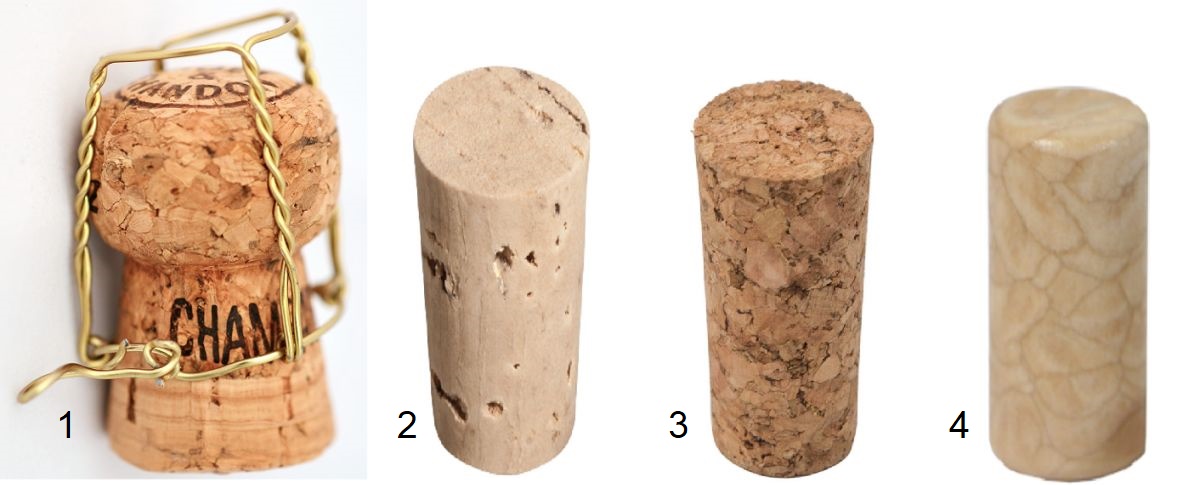French term for corking; see under cork.
Cork
The Assyrians, Egyptians and Greeks were already familiar with the cork stopper in early antiquity. Cork stoppers were also used to seal amphorae. In most cases, stoppers made of terracotta (clay) were used, which were fastened with string and then sealed with varnish, clay or pitch. Cato the Elder (234-149 BC) wrote that the wine jugs had to be sealed with cork and pitch after fermentation. The Romans were already familiar with this type of closure, but it was forgotten again with the fall of the Roman Empire. The Iberian Peninsula, the main source of cork bark, was conquered by the Moors in the 8th century and ruled for a long time. Until the late Middle Ages, vessels were sealed with wooden plugs dipped in oil and wrapped in hemp, pitch or wax.
Use of natural corks
With the development of glass bottles, glass stoppers were used first, but corks were rediscovered at the beginning of the 17th century. Champagne inventor Dom Pérignon (1638-1715) also experimented with it. Initially, the corks had a conical shape due to the different bottle neck sizes and were only half-sunk for easier removal. It was not until practical corkscrews were developed that they took on a cylindrical shape and were now driven fully into the neck of the bottle. From the middle of the 17th century, corks became the dominant type of closure for bottles, which led to a rapid boom in the cork industry. Around 60% of wine bottles worldwide are sealed with natural corks, and the trend is downwards due to the availability of alternatives.

The pictures show, from left to right, a natural cork for sparkling wine and champagne bottles (1), a natural cork for wine bottles (2), a agglomerated corks (3) and a plastic cork (4).
Manufacture
The natural cork stopper is mainly made from the thick, outer bark of the most suitable cork oak "Quercus suber". More than half of the world's production comes from Portugal, other countries are Spain, Algeria, Italy and Morocco. The trees, which can grow up to 10 metres tall, can be used for around 200 years. However, the bark can only be peeled or detached for the first time at the age of 25; the bark is only suitable for bottle corks from the age of 45. A tree can be debarked around 15 times at intervals of 9 to 12 years. The bark is stored for at least a year, then boiled in water, pressed, cut into slabs and sorted according to quality.
Strips are cut from these and the cylindrical plugs are punched out. They are produced in a length of 38 to 60 mm; longer corks usually also mean a higher quality of wine. The blanks are smoothed at the end faces and ground round. They are then...
Voices of our members

For my many years of work as an editor with a wine and culinary focus, I always like to inform myself about special questions at Wine lexicon. Spontaneous reading and following links often leads to exciting discoveries in the wide world of wine.
Dr. Christa Hanten
Fachjournalistin, Lektorin und Verkosterin, Wien